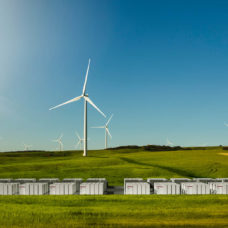A new rapid extraction process will provide greater access to Lithium and other ‘battery metals’ by 2025.
Why is Rapid Lithium Extraction Important?
Goldman Sachs reports that “total lithium demand today is 160,000mt of lithium carbonate equivalent (LCE) per year. [They] estimate that a 1% increase in battery electric vehicle (BEV) penetration would increase lithium demand by 70,000mt of LCE/year (or roughly half of current global demand for lithium).”
In order for electric vehicle penetration rates to hit industry forecasts, significant capital investments to expand commercial lithium capacity will be needed, particularly from producers and/or EV OEMs.
Typical Process Overview
According to Sam Pelaez, an analyst for Mining.com, lithium is formed over “long periods of time” as a result of seasonal variations in temperature and moisture.
The process of lithium extraction is a slow one to be sure. As Pelaez points out, brine must be “pumped into large evaporation ponds” and left to sit before it can yield high concentrations of metal.
The processing doesn’t stop there, he explains, “the brine is then trucked to a facility that extracts the lithium using chemical and metallurgical processes” before the lithium carbonate or lithium hydroxide can be “sold to battery manufacturers, including Tesla.”
MGX Case Study Results
Last month, Canadian mining company MGX Minerals developed a rapid lithium extraction process. As reported by SRC, the company’s proprietary design process was successful in recovering up to 83.7% lithium (Li) and concentrating 461 ppm Li from a 71 ppm representative sample of formation brine originating from the Sturgeon Lake oilfield.
“The brine found in an open reservoir has the right chemistry for low-cost evaporation process, contains potash as a valuable by-product and lithium grades are equal or superior to all other known undeveloped projects and many producing mines,” says Mining analyst Sam Perez.
Neo Lithium president and CEO Waldo Perez believes the project has the potential to be considered high-grade.
The lithium market will triple in size by 2025.Click To TweetSite Application and Diversification
As you may recall from the video above, the lithium market is expected to triple in size by 2025, according to analysts at Goldman Sachs.
In fact, due in part to the presence of mega-trends in communication, healthcare, and renewable resources the current market bodes well ahead of the confirmation. MGX technology will likely be not only applied to other sites but also used by other companies not directly connected to lithium extraction or the mining industry.

Wealth Minerals Ltd. has reported with great positivity to Mining.com on their lake-brine sampling and project evaluation program at the Laguna Verde Lithium Project in Chile backed by the Saskatchewan Research Council (SRC) – one of Canada’s leading providers of applied research, development and demonstration (RD&D) and technology commercialization.
“It is extremely exciting to have initiated this comprehensive project evaluation program at Laguna Verde” stated Henk van Alphen, Wealth’s CEO, “We believe that the project offers a unique opportunity where known technologies can be applied to a comparatively less complex lithium deposit.”
According to Mining.com shares in lithium exploration and development company Bacanora Minerals skyrocketed Monday after it announced it had inked a long-term supply deal with Japan’s Hanwa Corporation that will see the Tokyo-based trader acquire up to 100% of the output coming from the Sonora project in Mexico.
Moreover, miners are expected to spend $21 Billion on exploration by 2025. The consultant at CSA Global explains, “We have seen great interest in what I call ‘battery metals’ (such as lithium) and zinc, as well as graphite, particularly in Australia, Latin America and Russia”.

In fact, Mining also reports that the four companies that in 2015 provided 88 percent of the world’s lithium can’t keep up: Lithium contract prices have increased from $4,000 per metric ton in 2014 to as high as $20,000 today.
Where does the U.S. fit in?
Meanwhile, in the U.S., President Trump looks to deliver on campaign promises to revitalize American coal despite the 2016 Energy Information Administration (EIA) said that the U.S. coal production in 2015 dropped by 10.3% to below 900 million tons, the lowest level since 1986. EIA’s report also indicates that the total number of U.S. employees at coal plants was 65,971 employees, the lowest on record since 1978.
However, as EdgyLabs reported in March, at least one rural town has started to train drone pilots as infrastructure for a Google sponsored commercial drone delivery system in an effort to transition from one industrial model to another.
Reassuringly, Trump plans to meet with top tech advisors on the future of American infrastructure:
As a member on two of the President’s advisory councils, all [Elon Musk] has to do is comment on hot issues that otherwise would never be discussed. During these meetings, held once every month or two, Musk says he will voice his opinion in favor of immigration and combatting climate change.

In Nevada, lithium extraction startups are replacing the solar power and real estate booms that took place roughly a decade ago. Mining found that a minimum of six new startups, in conjunction with Albemarle Corp “have recently placed or leased claims in the area.”
Moreover, as demonstrated by Bloomberg’s reports, greater access to Lithium likely to spur new research in the American pharmaceutical industry. For an in-depth look at how one of the world’s simplest atoms holds the power to change our brain chemistry, take a listen to Radiolab’s segment on Lithium with writer Jaime Lowe as featured on NPR (National Public Radio).



















Comments (0)
Most Recent